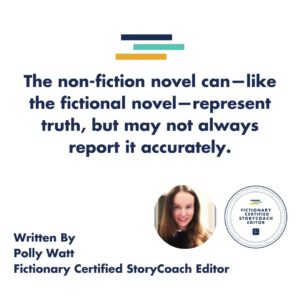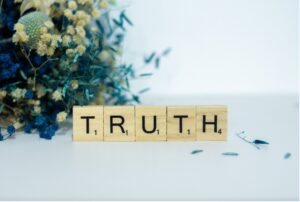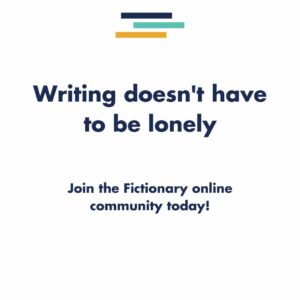
Can a novel be nonfiction is an interesting, and tricky, question to answer. Before we delve into this topic, let’s first examine:
Definitions

Merriam-Webster describes a novel as:
An invented prose narrative that is usually long and complex and deals especially with human experience through a usually connected sequence of events.
And according to the Encyclopaedia Britannica:
The novel is a genre of fiction, and fiction may be defined as the art or craft of contriving, through the written word, representations of human life that instruct or divert or both.
If we accept the Encyclopaedia Britannica’s viewpoint, the simple answer to the question can a novel be nonfiction is: No. A novel is fiction, and cannot therefore be non-fiction.
But naturally, it’s more complicated than that.
Wikipedia says:
The non-fiction novel is a literary genre which, broadly speaking, depicts non-fictional elements, such as real historical figures and actual events, woven together with fictitious conversations and uses the storytelling techniques of fiction.
Wikipedia acknowledges the difficulties in definition here—the apparent dichotomy of a non-fictitious form of fiction, saying:
The non-fiction novel is an otherwise loosely defined and flexible genre.
If you like your definitions tight and precise, the ‘non-fiction novel’ is what nightmares are made of: a contradiction which cannot exist.
Whereas, if you prefer your literary boundaries blurred and pushed, the non-fiction novel brims full of promise—and you’re in good company. As reported in the Guardian, the chair of judges for the 2021 International Booker Prize said:
“…on the whole, the (books) we found most exciting were doing something different… Fiction takes many, many different forms and some of the books came close to being historical writing. Some of them were very essayistic. Some of them seemed deeply personal, almost like memoirs. What we concluded was that this is a fantastically vigorous and vital aspect of the way fiction is being written at the moment, that people are really pushing the boundaries.”
—2021 International Booker Prizes Judges’ Chair, The Guardian
Introduction to Non-fiction novels
In answering the question, can a novel be nonfiction, we must look at the different kinds of non-fictional novel. Non-fiction novels follow classic storytelling structure, usually featuring a protagonist with goals and stakes.
Certain genres offer rich opportunities for non-fiction novels, including:
- True crime
- Historical narrative
- Memoir
True Crime

Truman Capote’s In Cold Blood is often considered one of the first non-fiction novels. Capote spent six years researching the 1959 Clutter family murders in Kansas, interviewing town residents and investigators.
His novel was lauded for its complex narrative, strong prose and attention to detail.
Despite this, critics cast doubt on the novel’s veracity. An Esquire reporter talked to Capote’s interviewees and noted discrepancies.
Difficulties arise when we equate ‘non-fiction’ with ‘truth’.
‘Truth’ is a slippery concept: people have differing perspectives of shared events. People lie, obfuscate, and rarely incriminate themselves. A criminal conviction doesn’t guarantee the right culprit was caught.
Although a non-fiction novel is inspired by real-life events, arguably, their claim to truth is no greater than that of fiction novels: their real ‘truth’ being in the strength of their representations of human experience rather than their recording of human experience.
Many readers find real-life events as (or even more) entertaining or instructional than made-up events. Some of these readers resist the suspension of disbelief required for fiction.
The danger in any non-fiction novel is that one may claim a particular perspective as truth, ignoring alternative, equally deserving voices.
And if research is proven erroneous, the entire edifice tumbles down.
Historical narratives

A historical non-fiction novel will be based on the known lives of real historical figures, and should not diverge from known history.
Primary research—diaries, letters, etc.—may provide a strong sense of character. Nevertheless, much of the novel’s:
- Dialogue,
- Action,
- Descriptions, and;
- Thoughts.
Will be imaginary.
One successful historical non-fiction novel which uses classic storytelling elements is First Light by Walt Larrimore (see Kristina Stanley’s blog.)
An interesting comparative example is Josephine Tey’s The Daughter of Time—a fictional novel about a Scotland Yard Inspector who investigates the real-life mystery of who killed the two Princes in the Tower of London during the War of the Roses?
This book features a fictional protagonist, but the subject-matter of his investigation is a real historical crime. Yet the ‘truth’ in Tey’s novel isn’t the identity of the killer, it’s that of her primary theme: history is written by the winners.
I’d posit that the difference between fiction and non-fiction novels is more of a sliding scale than a clear boundary.
Both seek the truths of human experience. Both have the capacity to mislead and misrepresent; to enlighten and instruct.
Memoir

Autobiography records the history of one’s life without necessarily using storytelling structures, whereas Auto-fiction provides a fictionalised autobiography.
Memoir can form a non-fiction novel.
Writers are their own protagonists, as in Paul Kalinithi’s When Breath Becomes Air or Elizabeth Gilbert’s Eat Pray Love.
However, most of us are guilty of occasionally sugar-coating our actions and motivations.
Few of us can remember all details of our lives with complete accuracy—especially with regards to other ‘characters’ in our story. Surely, every memoir combines fiction and non-fiction to varying degrees?
Can a Novel Be Nonfiction?: The Conclusion
A novel’s fundamental purpose is to speak the truths of human experience to reader.
When answering the question, can a novel be non-fiction, consider the following.
A non-fiction novel should seek to achieve speaking the truths of human experience through writing about real events and people, relying on exhaustive, comprehensive research.
It narrates these events using classic storytelling structures to engage readers’ interest, whilst reflecting on universal human experience.
The claim to being ‘non-fictional’ should be made with humility.
The non-fiction novel can—like the fictional novel—represent truth, but may not always report it accurately.

Further Reading…
If you want to read about a topic related to the question, can a novel be non-fiction, eee also: Fiction vs Non-Fiction
Article Written by Polly Watt

A former refugee lawyer in the UK, Polly Watt honed her skills working on cases where careful editing often really was a matter of life and death.
As a Fictionary StoryCoach Editor, she will apply the same care and attention to detail to your structural story edit. She’s passionate about stories and loves working on all different types of literary genres.
Want to be part of a writing and editing community with kindness at its heart?
Do you know about the free Fictionary community? We’re connecting writers and editors who all speak the same story editing language.
You’re most welcome to join.
- Connect with other writers and editors
- Get your editing questions answered by Fictionary Certified StoryCoach editors
- Access free, live editing classes presented by editing experts
- Learn about all things Fictionary: product updates, videos, webinars, best practices


